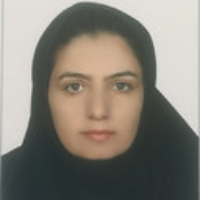An investigation of the relationship between land surface temperatures, geographical and environmental characteristics, and biophysical indices from Landsat images
Land surface temperature (LST) is an important indicator of habitat quality assessment for a local and global scale. In the present study, the effects of multiple factors on land use, geological formations, topographical and climate factors on LST in Kharestan region were investigated. To this end, images of July Landsat 7 and 8 satellites during the period 2000-2017, digital elevation model, geological map and topography were used. The surface temperature was extracted using a split-window method and also land use extracted from the supervised classification method which has been done in 2017. The correlation between surface temperature and elevation, aspect, slope, vegetation, soil moisture, and air temperature variables was investigated using statistical methods. The results indicated that the surface temperature average was 43 °C, Normalized difference vegetation index (NDVI) was 0.144 and Normalized difference moisture index (NDMI) was 0.068. According to the classification of images with an overall accuracy of 99.96% and kappa coefficients of 0.96, pasture and horticultural land cover the highest and lowest area, respectively. The highest surface temperature, 53 °C was observed in bare soil and residential areas and the lowest 29 °C in horticultural land. Moreover, the highest and lowest surface temperatures were related to Pabdeh-Gurpi and Asmari formations, respectively. In sunny slopes, the highest correlation, R2>0.5 was observed between surface temperature, elevation, temperature, vegetation, and surface moisture. Furthermore, in shady slopes, the surface temperature had the highest correlation, R2>0.5 with elevation, temperature, and vegetation. Among the above factors, elevation and temperature had the most influence on surface temperature. In addition, the correlation between vegetation index and a normalized moisture index with inverse surface temperature was >0.9. Also, the correlation between surface temperature and the air temperature was positive. Therefore, land use, geology, topography, vegetation, soil moisture, and air temperature are important factors in ecosystem temperature equilibrium.
- حق عضویت دریافتی صرف حمایت از نشریات عضو و نگهداری، تکمیل و توسعه مگیران میشود.
- پرداخت حق اشتراک و دانلود مقالات اجازه بازنشر آن در سایر رسانههای چاپی و دیجیتال را به کاربر نمیدهد.



